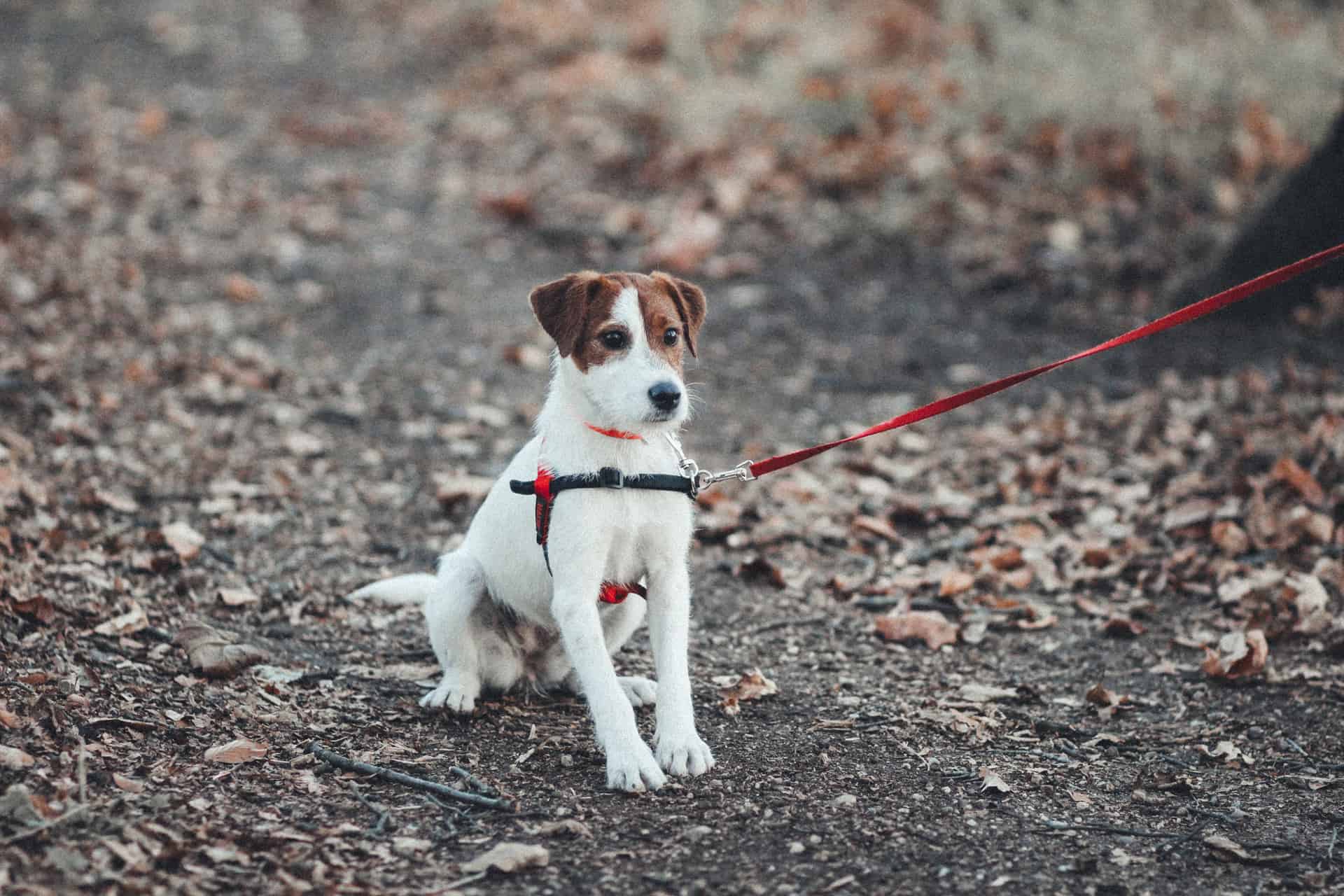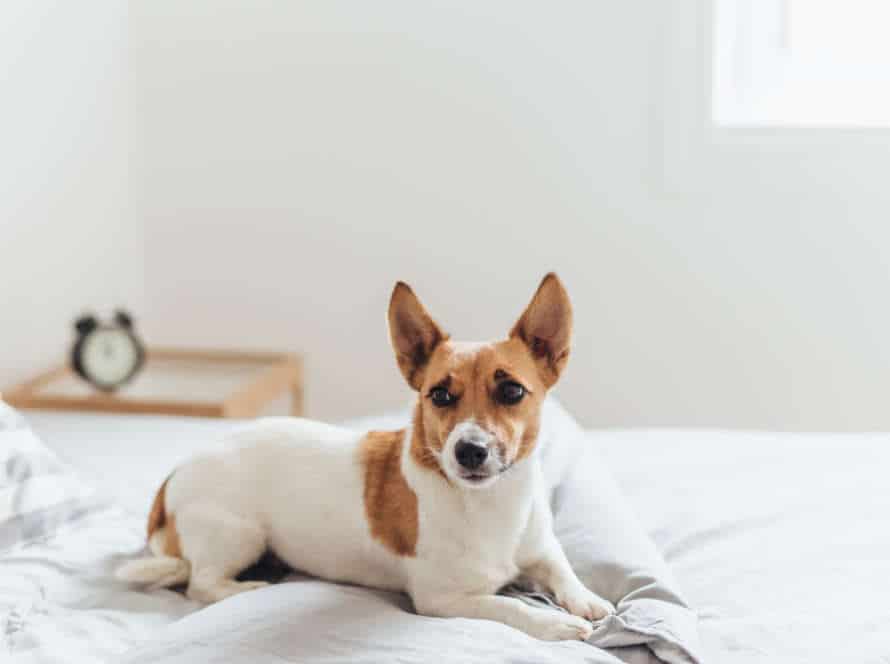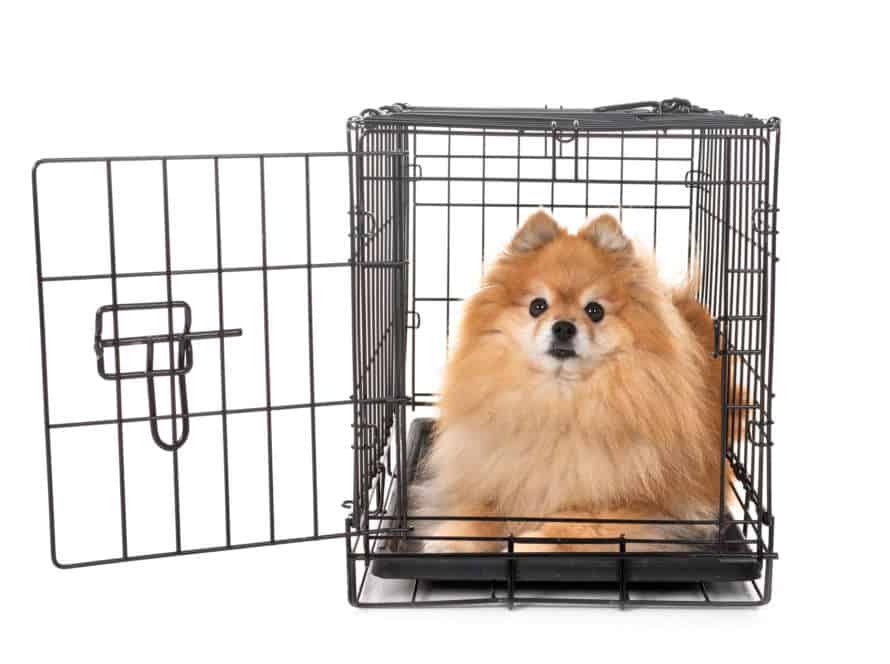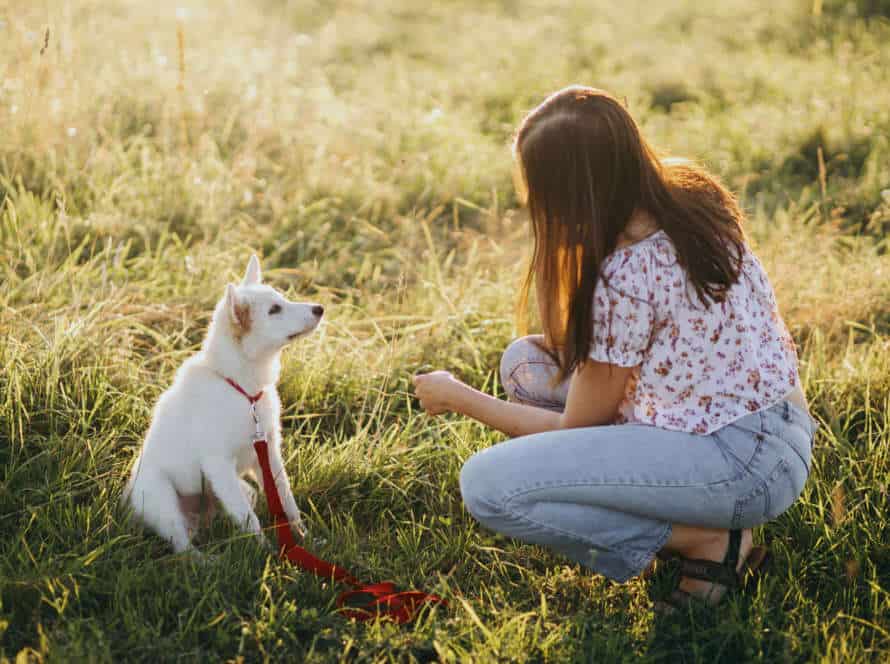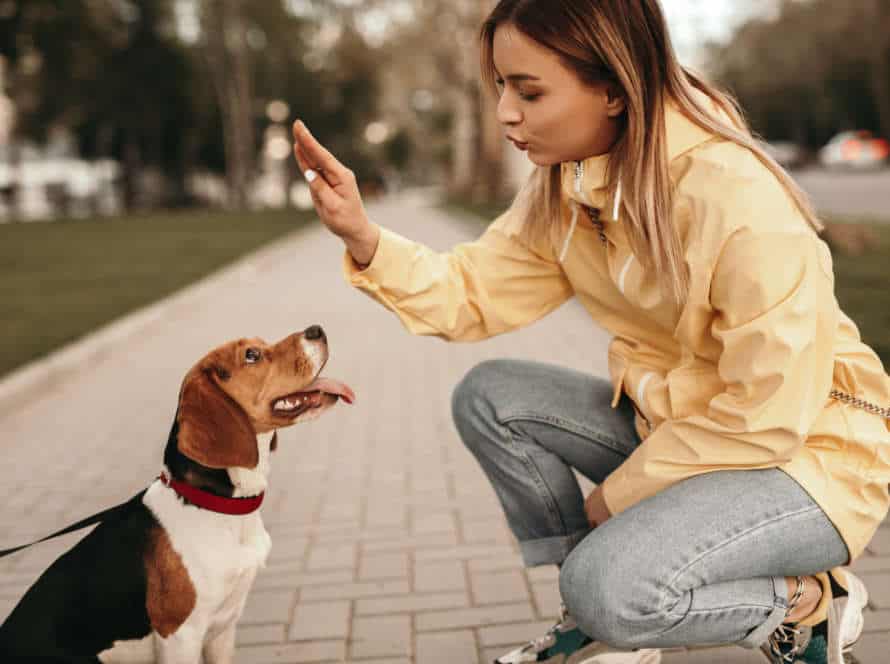Sit-Stay: Training Your Dog to Hold the Sit Position
Training your pup to sit is essential training. It’s the basis for many other commands. Here’s how to do it:
- Start with sit: Use a treat or calmly push down on their backside, saying “sit”.
- Use positive reinforcement: Reward your pup every time they sit with treats and praise.
- Add stay command: Say “stay” and hold your hand up in front of them.
- Increase duration: Gradually extend the time before giving them a reward.
Be patient and consistent. Start early for best results. Pro tip: Train them in puppyhood.
Outline-
Train your pup to stay in a Sit-Stay position? It’ll take patience, consistency and positive reinforcement! Here’s a plan to help:
- Start with the Sit command. Teach them to sit when you say so, before progressing.
- Add distance. Step by step, increase the gap between you two while practicing the Sit command, until they can stay still from the other side of the room.
- Increase the duration. When they can remain in the position for a few seconds, make it longer.
- Introduce distractions. Introduce toys, treats, or other people to help your dog stay focused even when there’s chaos around.
- Reward success. Praise them and give treats when they do well. Take breaks to avoid frustration.
With practice, they’ll be able to keep the Sit-Stay position for longer, making them a more obedient companion!
Understanding the Sit-Stay command
Teaching your furry friend the sit-stay command can be key in their obedience training! It’s not only great for getting them to stay put, but it also helps build the bond between pup and owner. So, let’s get started by understanding the basics of the sit-stay command.
Definition and benefits
The Sit-Stay command is a key part of teaching your pup obedience. There are many advantages for you and your canine pal.
- Safety: Sit-Stay can stop your dog from going into dangerous places. Like crossing roads, chasing animals, or any other risky situation.
- Control: With Sit-Stay, it’s simpler to control your dog in public, around other dogs, or near kids.
- Focus: This command can help your pup concentrate and focus better. Allowing for more positive conduct.
- Training: Sit-Stay training can help you with other areas of obedience. Like calming down, leash training, and competition prep.
Pro Tip: Use positive reinforcement when training your pup. Give treats, praise, and gentle pets to get better results.
When and where to use it
The Sit-Stay command is a must for your pup’s training. It teaches them to stay sitting until you allow them to move.
Sit-Stay is great in many situations:
- Greeting guests? It helps keep your pup calm and in place.
- Mealtime? They won’t beg or jump on the table.
- At the vet’s? Keeps them calm during exams and procedures.
- On walks? Great for crossing the street or waiting for traffic.
Practice and reinforce Sit-Stay regularly. Your pup will master it no matter what!
The importance of consistency in training
Consistency is essential when training your pup, especially for the Sit-Stay command.
Why? Dogs learn through repetition and routine. Consistent training helps them comprehend what behavior is expected of them.
Inconsistent training can muddle your pooch and cause undesired behavior or slower learning.
For Sit-Stay training, utilize the same verbal and physical cues all the time. Reward good behavior and rectify unwanted behavior consistently.
Patience, persistence and consistency are key for successful training and a stronger bond with your pup.
Teaching the Sit Position
Want your dog to know the ‘sit’ command? It’s vital in obedience training! Use positive reinforcement. Here’s how:
- Encourage your pup to sit with a treat.
- Praise your pet when they obey.
- Use a command word like ‘sit’ when they do it.
- Reward them with a treat every time.
Repeat this and soon your pup will reliably obey the ‘sit’ command!
Basic obedience commands
To have a good, obedient pup, teaching them basic commands is important. Start with “sit”! Here’s how:
- Hold a treat close to their snout.
- Move the snack up towards their head while saying “sit” in a firm, clear voice.
- When their bottom lowers to the ground, say “good boy/girl!” and give them the treat.
- Repeat this several times a day, using the same command.
Once they’ve learned “sit”, you can increase the time they need to stay in that position before rewarding them. The longer they can stay, the more training they can do.
Using positive reinforcement methods
Positive reinforcement is a great way to teach a dog new stuff. Including “sit” and “sit-stay“. Here’s how to do it: Hold a treat up to your pup’s nose, then slowly move it back above their head, while also lightly pushing their hips. Their head will follow the treat, and their bottom will lower into a sitting position. As soon as they sit, say “sit” and give them the treat + verbal praise. Repeat this until your pup knows that “sit” means treat + praise. To teach “sit-stay” use the same method, but gradually make the time between “sit” and the reward longer. As they get more comfortable, they’ll stay in the “sit” longer.
Tips for a successful training session
Teach your pooch how to sit with these tips!
Keep it short: Dogs have a short attention span. Limit training sessions to 10-15 minutes.
Use positive reinforcement: Give treats, praise and pat your pet when they do well. This will encourage them to repeat good behaviour.
Be consistent: Use the same commands and signals each time. This will help your pup understand what you want.
Start in a quiet space: Train in a place free of distractions. Gradually move to more challenging places as they become more skilled.
End on a positive note: Always end with a successful command and reward. This will make your pup feel successful.
By following these tips, your furry friend will know the sit-stay command, making them a great companion!
Teaching the Stay Position
Train your pup basic obedience by teaching them to sit! This will stop behaviors such as jumping on visitors or running away. Here’s how:
- Give your pup the “sit” command.
- Praise and reward your pup when they stay in the sit position.
- Repeat this until your pup can stay sitting for longer periods of time.
With patience and consistency, you’ll have a pup that can stay in the sit position!
The importance of the Sit command
The Sit command is essential for teaching your pup the Stay position. It helps them focus and listen to you, plus it builds trust and respect between you and your pup! Here are three reasons why the Sit command is so important:
- Bonding: Teaching your dog to sit creates a bond between you and your pet.
- Good behaviour: Sitting is a great behaviour for dogs, it teaches them patience and waiting.
- Obedience: The Sit command is the basis for other obedience training, like Stay and Come.
You need to be patient and practice consistently to teach your pup the Sit command. Pro Tip: Always reward your pup with praise and treats when they do the behaviour you want!
Techniques for teaching Stay
Teaching your pup the “stay” command is very important. It teaches them to stay until you give the release cue. This can even save their life! Sit-stay is a great way to teach them this. Here’s how:
- Put your doggy in the sit position, then stand in front.
- Open palm, say “stay”, step back.
- If they stay, say “yes” or “good boy/girl” and give a treat.
- Take two steps back, keep eye contact and repeat “stay”.
- Increase the distance and duration of staying as they become more comfortable. Reward them for holding it, and only end when you are ready.
With practice, your pup will get better at the stay command, improving their obedience and deepening your relationship!
Building duration and distance gradually
Teaching your pup to sit? Here are the key points:
- Start in a distraction-free environment.
- Lift the treat/toy up and back over their head – this should make them sit.
- Give verbal cue e.g. “stay” & a hand signal – flat hand!
- Begin with short duration and stand right in front of them.
- Increase distance/duration gradually.
- Practice every day & reward with treats & praise.
- Be consistent & patient, and your pup will soon master the sit-stay command!
Troubleshooting Common Issues
Teaching your pup to sit-stay can be tough! Common issues are distractions, vague cues, and a lack of motivation. Here’s how to beat them:
- Distractions: Have your dog practice in a quiet area.
- Inconsistent cues: Be clear when you give cues.
- Lack of motivation: Reward your pup with treats!
Breaking the Sit-Stay
Tackling the sit-stay position can be disheartening for dog owners. But don’t worry – it’s a common problem that can be solved! Here are a few tips to help you out:
- Loose leash: If your pup gets away from you when you ask them to sit-stay, practice with a loose leash first.
- Distractions: If your pooch is easily distracted, introduce new distractions gradually. Start mild and increase the level of distraction over time.
- Duration: If your dog can’t stay in the position for longer than a few seconds, add a couple of seconds each time you try. This will help them get used to sitting for several minutes.
- Proximity: Start close to your dog and gradually increase the space between you two. This way, your pup will be comfortable holding the sit-stay position even if you’re far away.
By following these tips, you’ll soon be able to train your dog to hold the sit-stay position effectively!
Overcoming Distractions
Distractions can cause difficulty when training a dog the Sit-Stay command. Here are some common distractions and how to deal with them:
Movement: Dogs are drawn to movement. If your pup breaks their Sit when someone passes by, have them walk or jog past while you encourage your dog to stay in the Sit position.
Noise: If loud noises break your dog’s concentration, slowly increase the volume of noises while rewarding them for sitting still.
Other Pets/People: If your pup breaks their Sit to greet them, have someone hold their leash while you train them to keep the Sit with distractions around.
Reward your dog for their patience and hard work. With time, they’ll learn to deal with distractions and hold the Sit better. Consistency is key; regular training and commands help your pup succeed.
Reinforcing the Sit-Stay
Strengthening your pup’s Sit-Stay is critical for their obedience training. It needs practice and patience, especially when handling typical problems that emerge during learning. Here are some ideas to troubleshoot common Sit-Stay issues:
- Distractions – Train in a peaceful, low-stress environment first, then steadily bring in new distractions like toys or treats to assist your dog to keep attention.
- Duration – Gradually add a few seconds per time to the Sit-Stay until you reach your target.
- Distance – Move slightly away from your dog when asking them to sit and stay. Take your time coming back after a few seconds before they stand up.
- Breaking the stay – Begin teaching your dog to return to the Sit-Stay situation after disrupting it by calling them and rewarding them for the return.
With these tips and positive reinforcement, your dog will ace the Sit-Stay position, making them a model of obedience.
Advanced Training Methods
Help your pup stay in the “sit” position by using more advanced techniques! Rewards and longer sitting times can make a difference. Be consistent and use the same words every time. This’ll help your pup learn quickly and correctly.
Let’s explore some of the more advanced methods for teaching your pup to stay in the “sit”!
Adding a verbal cue
Adding a verbal cue is key when teaching your pup to stay seated for a long time. Here’s what you gotta do:
- Tell your pup “sit” & give them praise when they do.
- After a few seconds, say the verbal cue (e.g. “stay” or “wait”) & show your palm outwards.
- Move away from them without losing eye contact & ensure they stay seated.
- Walk back after a few seconds, praising them & releasing them from the sit-stay.
- Repeat it, increasing the distance & time till you get the desired obedience & self-control.
Tips:
- Use the same cue & hand gesture to create a link with the behavior & command.
- Reward your pup now & then to reinforce their good behavior.
Adding a hand signal
Adding a hand signal while training your pup to sit-stay is a great advanced technique. Here are the steps:
- Train your pup to sit with a verbal command such as “sit“.
- Introduce a new hand signal, like holding up your open palm in front of their face.
- Use the hand signal and the verbal command together during training. Reward them when they obey quickly.
- Connect the hand signal and the sit command.
- Add the “stay” command, using the verbal command and hand signal.
- Gradually move away while keeping the hand signal and verbal command. Reward them when they succeed.
Proofing the Sit-Stay
Proofing the Sit-Stay is essential for advanced dog training. Here’s how to do it:
- Start by training your pup to stay in the position for a bit.
- Increase the duration gradually.
- Then, add distance between you and your pup. Begin with one step back, then two.
- Introduce distractions slowly.
- Use rewards like treats or rubs to keep your pup still.
- Repeat the Sit-Stay command in different situations.
Pro tip: Be patient and consistent when reinforcing the command!
Practice Makes Perfect
Want your pup to stay in a sit? It takes lots of practice! Get a basic understanding of the Sit-Stay command. Then, set up regular training sessions. With consistent practice and reinforcement, your pup can hold the Sit-Stay for longer. Here’s how to train your pup for the Sit-Stay properly:
- Begin by commanding your pup to sit.
- Once your pup is in a sit, say stay out loud.
- While saying stay, hold up your hand in a stop gesture.
- Wait two seconds, then give your pup a treat.
- Repeat this process, gradually increasing the time between treats and the duration of the Sit-Stay.
- Once your pup can hold the Sit-Stay for 30 seconds or more, start practicing in different places with different distractions to further reinforce the command.
Training frequency
Training frequency is key when teaching your dog the sit-stay command. Consistency and repetition are musts for success. Here are some tips to help you train your pup:
- Start in a quiet, familiar environment with no distractions.
- Reward your pup with treats, verbal praise, and petting for holding the sit position.
- Begin with short training sessions of 5-10 minutes, and increase time as your pup gets better.
- Practice the command every day to reinforce training.
- If pup breaks the sit position, use a command like “no” to get pup’s attention, and then start again.
- Every dog is different, some may need more frequent training.
With patience and consistency, your pup will learn to hold the sit position for longer periods.
Proper rest and hydration for your dog
To master the “Sit-Stay” command, your pooch needs to get proper rest and stay hydrated. When well-rested and hydrated, dogs have greater energy and focus to learn new commands and remember them. Here’s how to ensure that:
- Give your pup unlimited access to fresh water.
- Limit exercise in hot or humid weather.
- Offer a cool, comfy spot for sleeping.
- Stick to a consistent training routine and don’t over-train.
- Reward good behavior with treats and praise!
Celebrating success and building a strong bond with your pet.
Celebrate your pet’s success & build a strong bond with them by teaching them to sit-stay. It’s one of the basic commands every dog should know. It takes patience, consistency, and positive reinforcement. Here’s how:
- Start with the ‘sit’ command. Reward them with treats & praise when they do it right.
- Add the ‘stay’ command. Have a hand signal & verbal cue to keep them in place.
- Gradually increase the distance.
Remember: practice is key. Be consistent & use positive reinforcement. Treats, praise & playtime after every success!
Frequently Asked Questions
Q: Why is it important to teach my dog to stay in a sit position?
A: Teaching your dog to hold a sit position is important for their safety and obedience. It prevents them from running off or getting into trouble, and helps them understand that you are in control of their actions.
Q: How do I teach my dog to stay in a sit position?
A: Start by getting your dog to sit, then use a hand signal or vocal cue to tell them to stay. Slowly increase the amount of time you expect them to hold the position and reward them with treats or praise when they do it correctly.
Q: What if my dog won’t hold the sit position?
A: If your dog is struggling to hold the sit position, start by working on perfecting their regular sit. Gradually add distractions and work on building up their impulse control before moving on to the stay command.
Q: Can I use a leash to help train my dog to hold the sit position?
A: Yes, a leash can be a useful tool for teaching your dog to stay in a sit position. Start with a short leash and gradually give them more freedom as they become more comfortable with holding the position.
Q: How long should I expect my dog to hold the sit position?
A: It’s important to start with short durations and gradually increase the amount of time your dog stays in the sit position. Aim to work up to several minutes of holding the position, but remember that every dog is different and may progress at a different pace.
Q: How can I keep my dog from getting up from the sit position?
A: To keep your dog from getting up from the sit position, use a release cue such as “okay” or “free” to let them know when they can move again. It’s important to only release them from the position when they have been successful in holding it for the desired amount of time.

